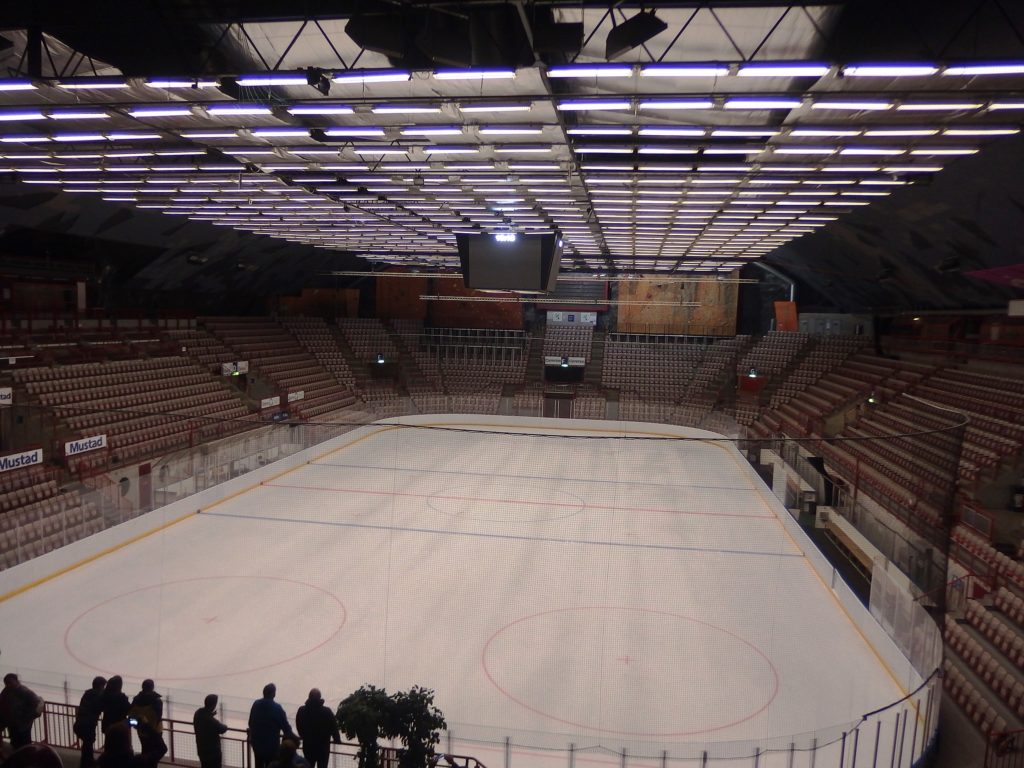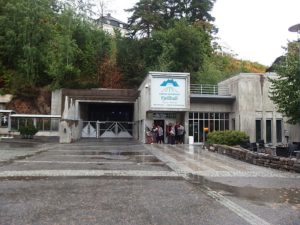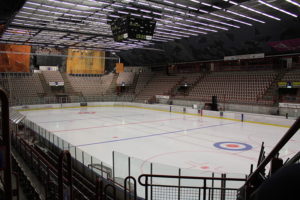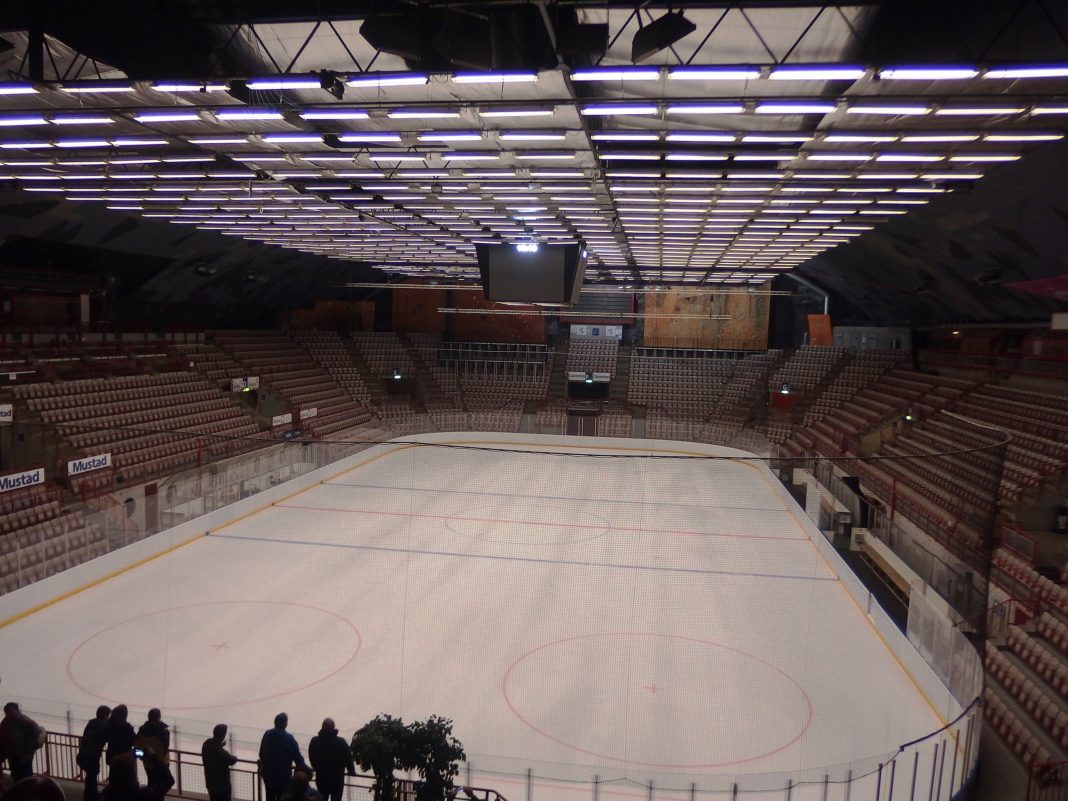Gjøvik Olympic Cavern Hall is an ice hockey rink located within a mountain hall in Gjøvik, Norway. With a capacity of 5,500 spectators, the hall also features a 25-meter swimming pool and telecommunications installations. Opened in 1993 and costing 134.6 million Norwegian krone (NOK), it was built for the 1994 Winter Olympics, where it hosted 16 ice hockey matches. It is the home of Gjøvik Hockey, has hosted the 1995 World Short Track Speed Skating Championships, and is also used as an event venue. The structure is the world’s largest cavern hall for public use.

Because half the country’s surface consists of exposed rock, Norway has a tradition of building mountain cavern halls for many purposes, from tunnels via power plants to sports centers.
Construction started on 1 April 1991. Several points of attack were created to get the most rational workload. The hall opened on 6 May 1993, with a show televised on national television and with 5,000 guests.

The facility is located just west of the town center of Gjøvik, with the main hall 120 meters into the mountain. It is covered by 25 to 55 meters of bedrock. In addition to the main hall, there is a swimming pool, a cafeteria, and a telecommunications facility operated by Telenor. The main hall is designed as a multi-use venue and can feature indoor football, handball, basketball, volleyball, rifling, and tennis, as well as concerts, dining, and events.

The gross area of the complex is 14,910 square meters, while the net area is 10,010 square meters. The stadium covers 1,965 square meters, the public areas cover 2,224 square meters, the media center covers 2,110 square meters, the participant facilities cover 263 square meters, the administrative and VIP facilities cover 577 square meters, and the operations, management, technical, electrical and storage facilities cover 2,253 square meters. The main hall cavern is 61 meters wide, 91 meters long, and 25 meters high. The seating capacity for the ice rink is 5,800, although it was 5,300 during the Olympics.
According to Wikipedia














